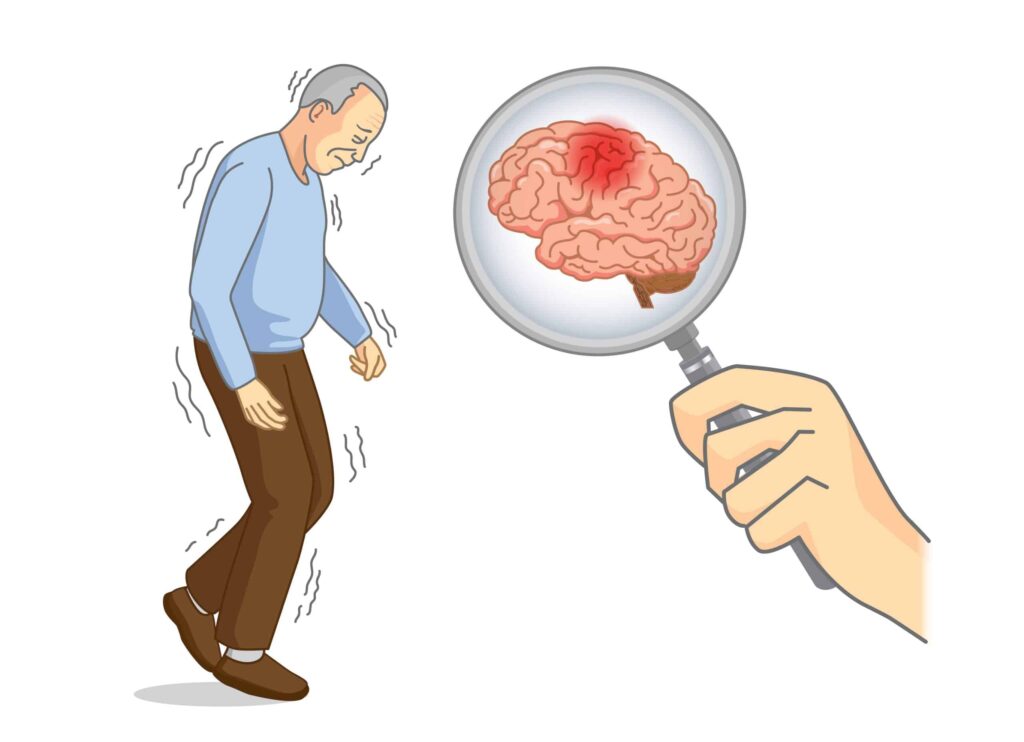
Understanding Parkinsonism: Causes, Symptoms, and Treatment
Parkinsonism refers to a group of neurological disorders that involve the progressive degeneration of the nervous system, leading to motor dysfunctions. The most common form of parkinsonism is Parkinson’s disease, but there are other conditions that can lead to similar symptoms, often referred to as “Parkinsonism.” Parkinsonism impacts movement, often resulting in tremors, stiffness, and slowness, which can significantly affect an individual’s quality of life.
Parkinsonism is a term used to describe a group of neurological disorders that lead to symptoms similar to those of Parkinson’s disease. These symptoms primarily involve motor dysfunction, including tremors, bradykinesia (slowness of movement), rigidity (muscle stiffness), and postural instability (difficulty with balance). While Parkinson’s disease is the most well-known cause of parkinsonism, other conditions can also cause similar motor problems, such as multiple system atrophy, progressive supranuclear palsy, and corticobasal degeneration.
Causes of Parkinsonism
Parkinsonism can be caused by several factors, including genetic and environmental influences, and sometimes the exact cause may be unknown. The primary cause of Parkinson’s disease, the most common form of parkinsonism, is the degeneration of dopamine-producing neurons in the brain. Dopamine is a neurotransmitter that plays a key role in regulating movement and coordination.
Other causes of parkinsonism can include:
- Multiple System Atrophy (MSA): A rare, progressive neurological disorder that affects multiple parts of the brain and spinal cord, leading to motor symptoms similar to Parkinson’s disease.
- Progressive Supranuclear Palsy (PSP): A condition that affects eye movements and balance, often mistaken for Parkinson’s disease, but with a more rapid progression.
- Corticobasal Degeneration (CBD): A rare disorder that affects one side of the body more than the other, causing difficulty with movement and coordination.
- Drug-Induced Parkinsonism: Certain medications, especially antipsychotics and drugs used to treat nausea, can lead to symptoms that resemble parkinsonism. These symptoms are often reversible if the medication is discontinued.
- Genetic Factors: Although Parkinson’s disease has a strong genetic component in some families, most cases are not inherited. However, specific genetic mutations can increase the likelihood of developing the disease.
- Vascular Parkinsonism: This form of parkinsonism occurs due to small strokes affecting the brain’s movement control centers. It typically presents with a gradual onset of symptoms and is more common in older adults.
The symptoms of parkinsonism can vary depending on the underlying condition. However, the most common symptoms shared by all forms of parkinsonism include:
- Tremors: Involuntary shaking or trembling, especially in the hands, legs, or face.
- Bradykinesia: Slowness of movement that may make everyday tasks difficult, such as walking, dressing, or eating.
- Rigidity: Muscle stiffness that can cause discomfort and restrict movement, often affecting the neck, shoulders, and arms.
- Postural Instability: Difficulty maintaining balance, leading to frequent falls or an unsteady gait.
- Speech and Swallowing Issues: As the disease progresses, individuals may experience changes in speech, such as a softer or more monotone voice, and difficulty swallowing.
- Cognitive and Emotional Changes: Parkinsonism can sometimes lead to cognitive decline, memory problems, or depression. Some forms of parkinsonism, such as progressive supranuclear palsy, may also lead to significant cognitive impairment early on.
Diagnosis of Parkinsonism
Diagnosing parkinsonism requires a thorough medical evaluation, which includes:
- Medical History and Symptom Review: Doctors assess the patient’s symptoms and medical history to understand the nature and duration of the movement problems.
- Neurological Examination: A detailed physical and neurological exam to assess motor function, reflexes, and coordination.
- Imaging Tests: While there is no definitive test for Parkinson’s disease, imaging tests such as an MRI or CT scan may be used to rule out other causes of symptoms like stroke or tumors.
- Response to Medication: Doctors may prescribe Parkinson’s disease medications such as levodopa to observe how well the symptoms respond, helping to confirm the diagnosis.
Treatment and Management of Parkinsonism
While there is no cure for Parkinsonism, several treatment options can help manage symptoms and improve quality of life. The treatment plan depends on the type of parkinsonism, the severity of symptoms, and the individual’s overall health.
- Medications:
- Levodopa (L-dopa): The most common treatment for Parkinson’s disease, this medication helps replenish dopamine levels in the brain.
- Dopamine Agonists: These mimic the effects of dopamine in the brain and may be used alone or in combination with levodopa.
- Anticholinergics: These drugs help control tremors and muscle rigidity.
- MAO-B Inhibitors: These medications slow down the breakdown of dopamine in the brain.
- Physical and Occupational Therapy: Physical therapy can help improve movement, balance, and posture, while occupational therapy can assist with daily activities.
- Surgical Treatment: In some cases, surgical options such as deep brain stimulation (DBS) may be considered to help control motor symptoms in patients who do not respond to medications.
- Lifestyle Modifications: Exercise, a healthy diet, and mental stimulation can help manage symptoms and improve overall well-being.
Conclusion
Parkinsonism encompasses a range of neurological disorders that affect movement and quality of life. While the symptoms can be challenging, early diagnosis and effective treatment can help manage the condition and improve function. It is important for patients and caregivers to work closely with a healthcare team to tailor a treatment plan that suits individual needs. With ongoing research, advances in therapy, and better support systems, people with Parkinsonism can continue to live fulfilling lives.



